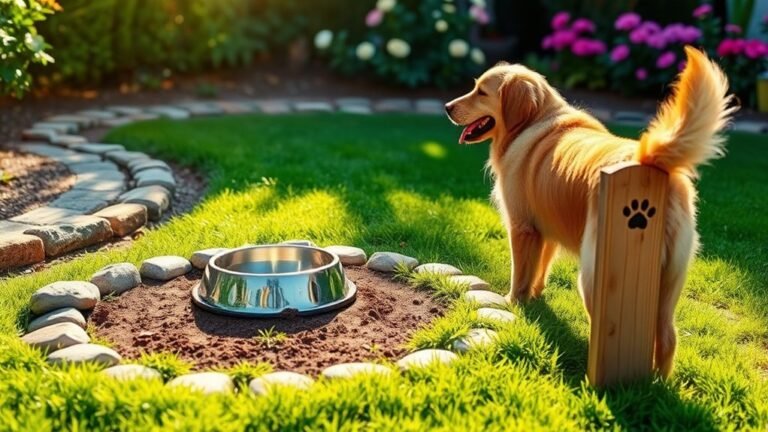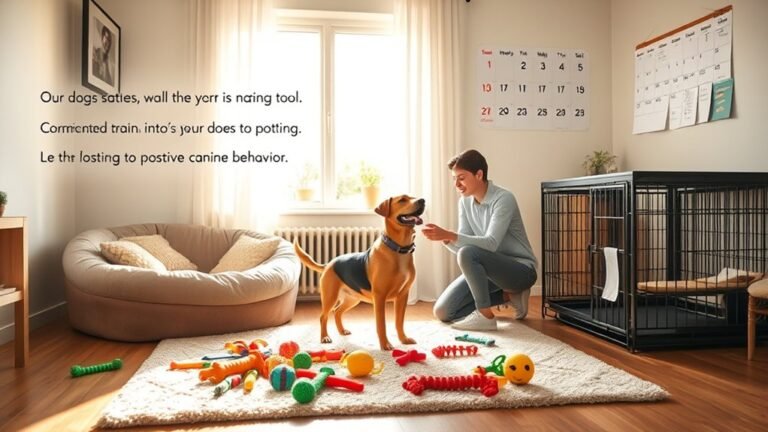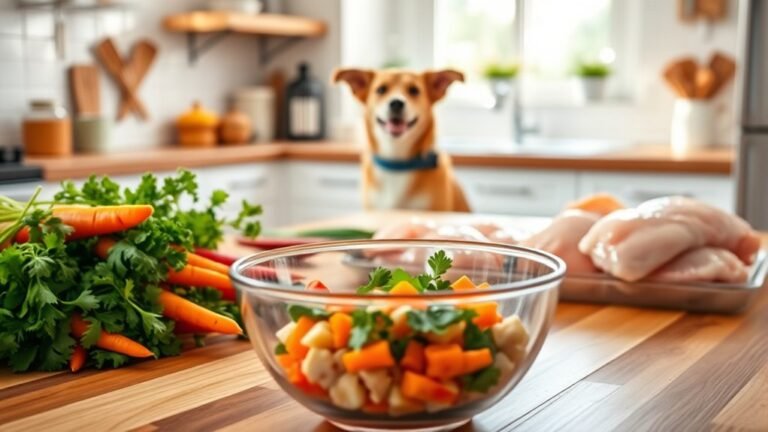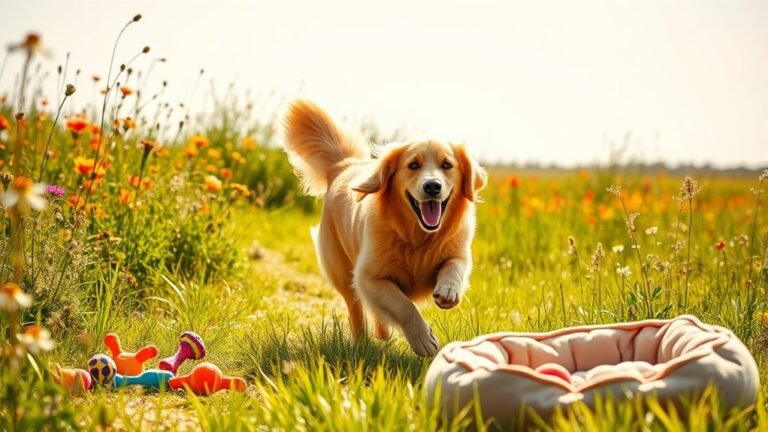7 Natural Remedies for Dog Anxiety
Does your dog feel anxious? You're not alone. Many dog owners deal with this. The good news is there are natural ways to help your pup relax. Let's go over seven simple remedies that can really help. These tips will support your furry friend and make life easier for both of you.
- Calming Essential Oils: Some oils, like lavender, can help calm your dog. Just mix a few drops with water and spray it around the area. Always check with a vet first to make sure it's safe for your dog.
- Music Therapy: Playing soft music can soothe your dog's nerves. There are even playlists made just for dogs!
- Gentle Massage: Giving your dog a gentle massage can help. It relaxes their muscles and shows them you care.
- Routine and Structure: Dogs feel safe with a set routine. Try to feed, walk, and play with your dog at the same times each day.
- Safe Space: Create a cozy spot for your dog to retreat to when they're feeling stressed. This can be a bed in a quiet corner or a crate with their favorite blanket.
- Calming Chews: Look for treats that help reduce anxiety. Many include calming ingredients like chamomile or valerian root.
- Positive Reinforcement: When your dog is calm, reward them with treats or praise. This builds good habits and helps them learn how to handle stress.
With these remedies, you can help your dog feel more relaxed and happy. Starting today can lead to a calmer, more enjoyable life for both of you!
Key Takeaways
Here are some natural ways to help your dog feel less anxious:
- Use calming essential oils like lavender and chamomile. Mix them with a carrier oil and gently apply it to your dog's fur. This can help them relax.
- Consider herbal supplements like chamomile or valerian root. These can help soothe anxious dogs. Always check with your vet before giving your dog any new supplements.
- Make sure your dog gets regular exercise and playtime. This helps reduce anxiety and builds a strong bond between you and your furry friend.
- Use simple training techniques. Reward your dog for staying calm. This builds their confidence and helps them deal with anxiety triggers better.
- Create a cozy safe space for your dog. Add comfort items like soft blankets and their favorite toys. This will make them feel secure and encourage relaxation.
These tips can help your dog feel calm and happy!
Calming Essential Oils
When your dog feels anxious, calming essential oils can help. Lavender oil is great for calming down pets. It promotes relaxation and can make them feel safe. You can put it in a diffuser or mix it with water and apply it to your dog's bedding.
Chamomile is another oil that helps dogs feel calm. It can reduce stress and discomfort. This helps your dog feel better during tough times.
Always remember to mix essential oils with a carrier oil because dogs can react strongly to strong scents.
Adding these natural oils to your pet care routine can create a loving atmosphere and support your dog's emotional health. Plus, it strengthens your bond with your furry friend!
Herbal Supplements
Calming essential oils can help reduce your dog's anxiety. Herbal supplements can also be helpful. Herbal teas like chamomile and valerian root are good choices to calm your dog's nerves.
These natural options can help your dog relax without the side effects that come with some medications. You might also consider homeopathic remedies like Aconitum or Arsenicum Album. These can help soothe sensitive dogs.
However, it's very important to talk to your vet before trying any herbal treatment. They can help you choose the right options for your dog's needs. Using herbal supplements can create a caring environment where your dog feels safe and secure.
This can help strengthen the bond between you and your pet. Your dog's health is important, and these remedies can support their well-being.
Exercise and Physical Activity
Exercise and physical activity are very important for helping dogs feel less anxious. Playing with your dog regularly helps them and makes your bond stronger.
Games like fetch, tug-of-war, or agility training can make your dog happier and healthier.
You can also try dog sports. These sports give your dog structured exercise, which helps them think and move. Plus, they can meet other dogs and people, which makes them feel included.
Make sure to take your dog for walks every day. Play with them and think about joining local training classes. This will keep your dog active and help their emotions stay balanced.
Behavioral Training Techniques
Understanding how behavioral training helps with dog anxiety can make your pet feel better. Using clear methods can help your dog feel safe and confident.
- Reward calm behavior with treats or praise.
- Slowly introduce your dog to things that make them anxious.
- Keep a regular schedule to help your dog feel secure.
- Teach basic commands to improve how you communicate during stressful times.
- Play together to build trust and reduce anxiety.
These methods can lower anxiety and build a stronger bond with your dog.
Remember to be patient. With time, your dog can learn to handle their feelings better.
Comfort Items and Safe Spaces
When your dog feels anxious, comfort items and safe spaces can really help. You can make a cozy spot with soft blankets to keep them warm and feeling safe.
Try to pick a quiet corner in your home as their safe space, away from loud sounds and busy areas. Add their favorite toys and something that smells familiar to make them feel more relaxed.
Playing calm music can also help soothe their nerves and create a peaceful atmosphere. By regularly providing these comfort items and spaces, you help your dog feel safe and secure.
This can lower their anxiety and improve their happiness. Your support really matters for their emotional health!
Diet and Nutrition Adjustments
Creating a safe and cozy space for your dog is important, but the right food is also key to helping with their anxiety. Good nutrition can support their mood. Feeding your dog at the same time every day can help keep them calm and steady.
Here are some food ideas to consider:
- High-quality protein gives them energy.
- Omega-3 fatty acids help their brain stay healthy.
- Complex carbohydrates keep their blood sugar steady.
- Antioxidants can lower stress.
- Herbs like chamomile or valerian root might help relax your dog.
These changes in diet can lead to a calmer dog over time. Taking care of their body can improve their mind, making them happier and more at ease.
It's all about building a strong bond and a better life together!
Massage and Relaxation Techniques
One great way to help your dog feel less anxious is through massage and relaxation.
Dog massage can release endorphins, which help calm your furry friend.
To start, gently stroke their back and limbs.
Pay attention to their body language to see where they like it best. If they seem comfortable, you can add a little more pressure.
While you massage, try deep breathing.
This can make the experience more relaxing for both of you.
Playing soft music or being in a quiet place can also help your dog feel calm.
By doing these activities regularly, you build a stronger bond with your dog.
This safe space will help reduce their anxiety over time.
Enjoy this special time together!
Frequently Asked Questions
Can Anxiety in Dogs Be Hereditary or Genetic?
Yes, anxiety in dogs can run in families. Some dog breeds are more likely to have anxiety because of their genes. This means if a dog's parents had anxiety, the puppy might also have it. Knowing this can help you care for your dog better. You can provide the right support and training to help reduce their anxiety.
How Do I Know if My Dog Is Anxious?
You can tell if your dog is anxious by watching their behavior. Look for signs like pacing, shaking, barking too much, or hiding. If you see any of these things, it might mean your dog is feeling worried. Spotting these signs early helps you support your furry friend and make them feel better.
Are There Specific Breeds More Prone to Anxiety?
Some dog breeds, like Border Collies and Dachshunds, can have more anxiety than others. Each breed has traits that may make them feel nervous or stressed. Knowing these traits and what can trigger their anxiety can help you care for them better. When you understand your dog's needs, you can support their happiness and comfort.
How Long Does It Take for Remedies to Work?
When you try herbal treatments or home remedies, you might see some changes in about a week. However, for the best results, it's important to use them regularly for a few weeks. Be patient and give yourself time to notice the full effects.
Can Anxiety Lead to Physical Health Issues in Dogs?
Yes, anxiety can cause health problems in dogs. When dogs feel stressed, they might change their behavior. This can hurt their overall health and happiness. It's important to take care of your dog's mind and body. Doing this helps keep your furry friend happy and healthy.







